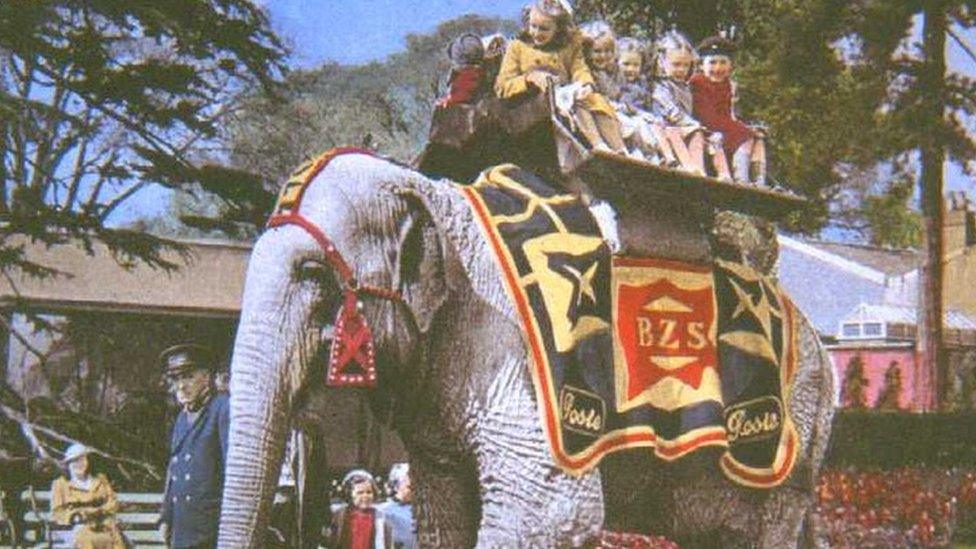Hunt for 130-year-old Kingswood circus elephant burial site
- Published
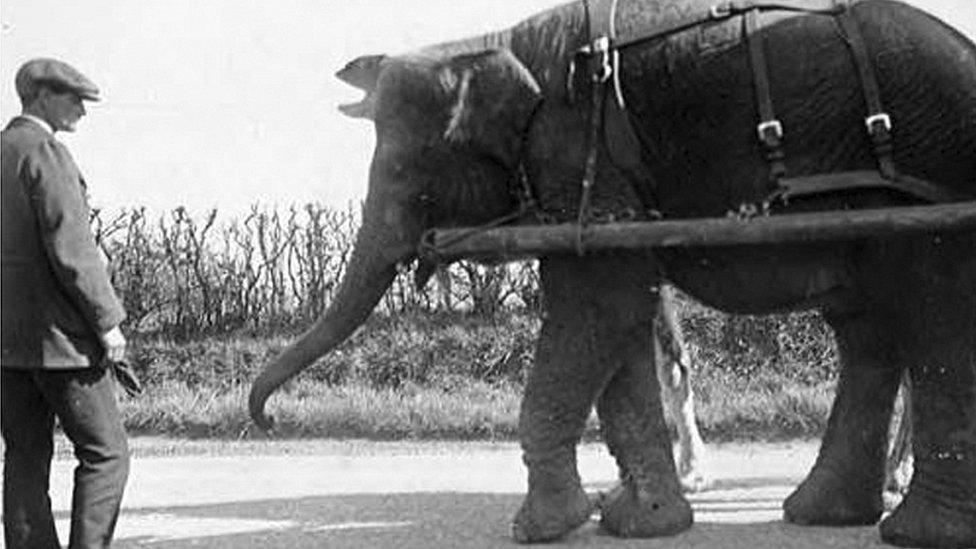
The elephant was part of a Victorian circus menagerie
Archaeologists are hoping to uncover the grave of a circus elephant thought to have been buried in an English village more than 130 years ago.
The animal, called Nancy, may have been buried in Kingswood, South Gloucestershire in 1891.
The elephant was part of Bostock and Wombwell's travelling "beast show".
Tom Richardson, archaeologist at Wessex Archaeology, said: "Searching for Victorian elephant burials isn't our usual fare."
Kingswood is now part of the urban area of east Bristol.
Wessex Archaeology is doing a geophysical survey to find the burial site, which is said to be in the area of Whitefield's Tabernacle or Holy Trinity Church.
The team has been commissioned by South Gloucestershire Council to find the site as part of a regeneration project.
Mr Richardson continued: "A grave of that size would leave a large hole and would certainly be identifiable with the ground-penetrating radar equipment we will be using to survey the site."
'Legendary' burial rumours
Although no historical sources reference the death, the elephant is said to have died from yew leaf poisoning.
Alan Bryant, curator at Kingswood Museum, said: "I first heard about the Kingswood elephant burial in the 1970s when I was doing my rounds as a local milkman.
"Since then, I have had countless conversations and debates with local people about it.
"I for one am delighted at the potential of discovering the legendary Kingswood elephant burial."
In February 1891, local newspaper the Bristol Mercury reported that Bostock's Star Menagerie had exhibited nearby, with the show including Nancy who was described as a "fine nine-year-old elephant".
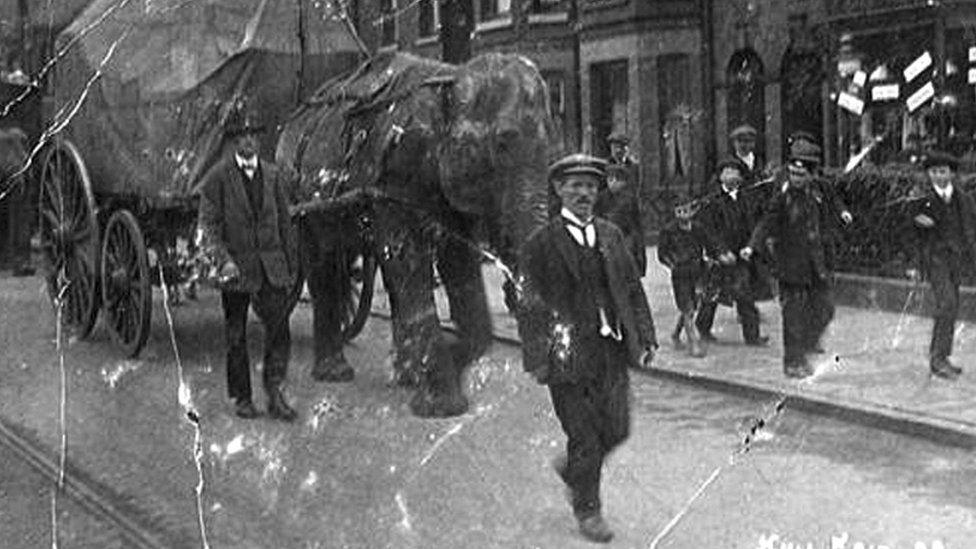
The elephant was part of a travelling "beast show" exhibition
Lorrain Higbee, zooarchaeologist at Wessex Archaeology, said: "This initial archaeological investigation aims to locate the elephant burial but should we do so, you may be surprised at what we could learn about the life of this animal from studying its skeletal remains.
"In the case of a menagerie elephant, as well as understanding where the animal came from and its age, we may be able to see the impact of its life as an entertainer.
"This may include evidence of confinement including trauma from shackling the animal or arthritis.
"It may also be possible to detect injuries or strains resulting from its performance duties, such as repetitive movements."
Cllr Chris Willmore, from South Gloucestershire Council, said: "Our work as part of the Kingswood regeneration project has presented us with a unique opportunity ahead of the high street pedestrianisation work.
"We're excited to see what archaeologists may uncover and if we can finally solve this local mystery or find some new mysteries to solve."

Follow BBC West on Facebook, external, Twitter, external and Instagram, external. Send your story ideas to: bristol@bbc.co.uk , external
Related topics
- Published3 July 2023
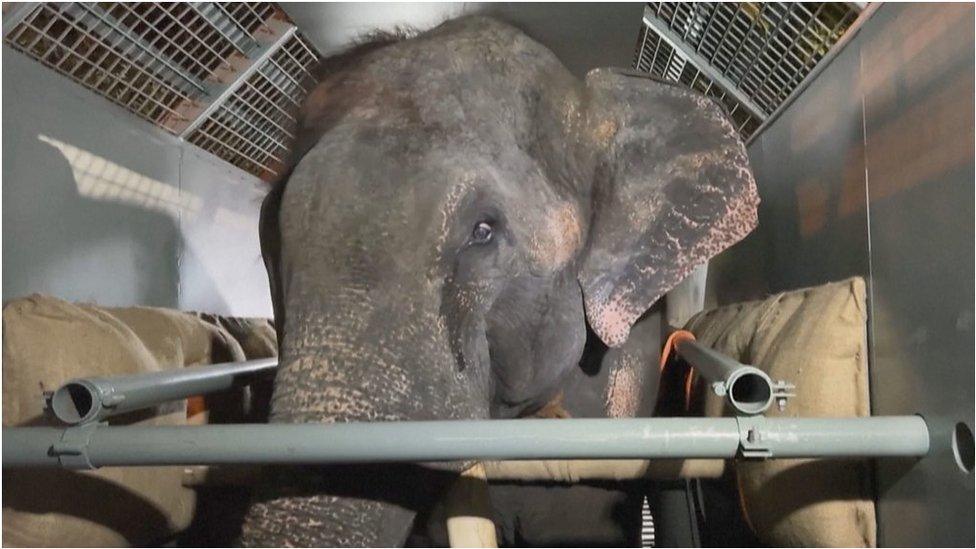
- Published27 June 2023
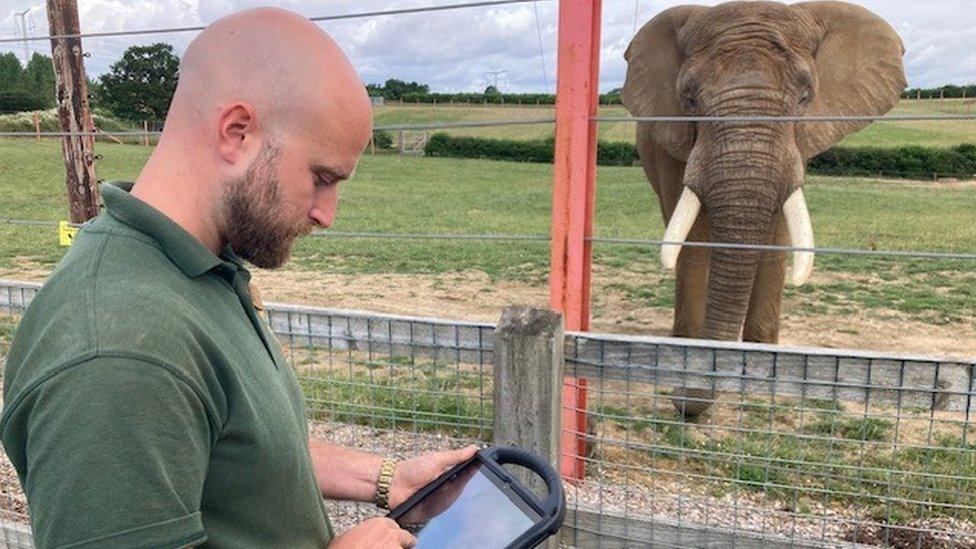
- Published3 September 2022
